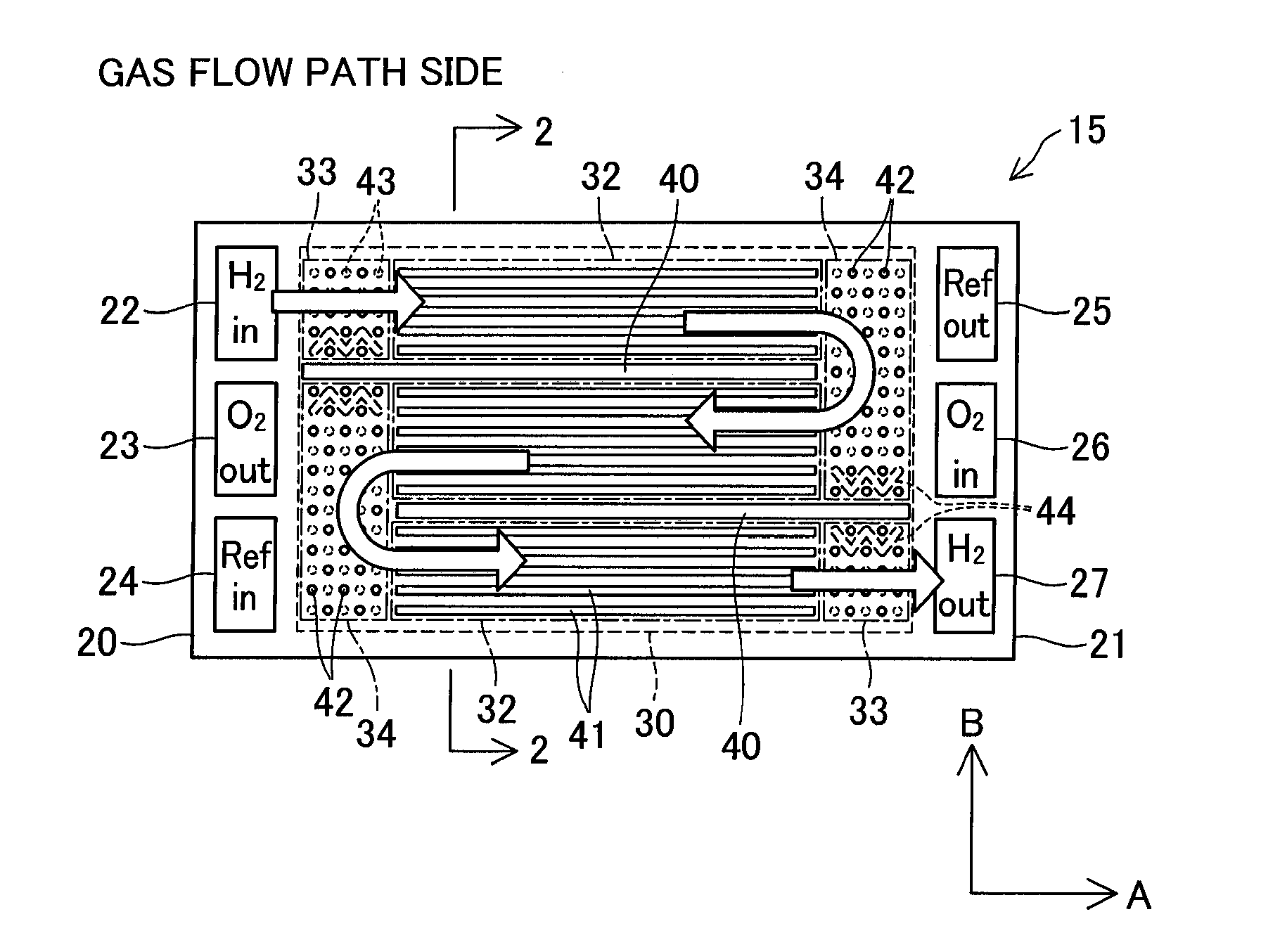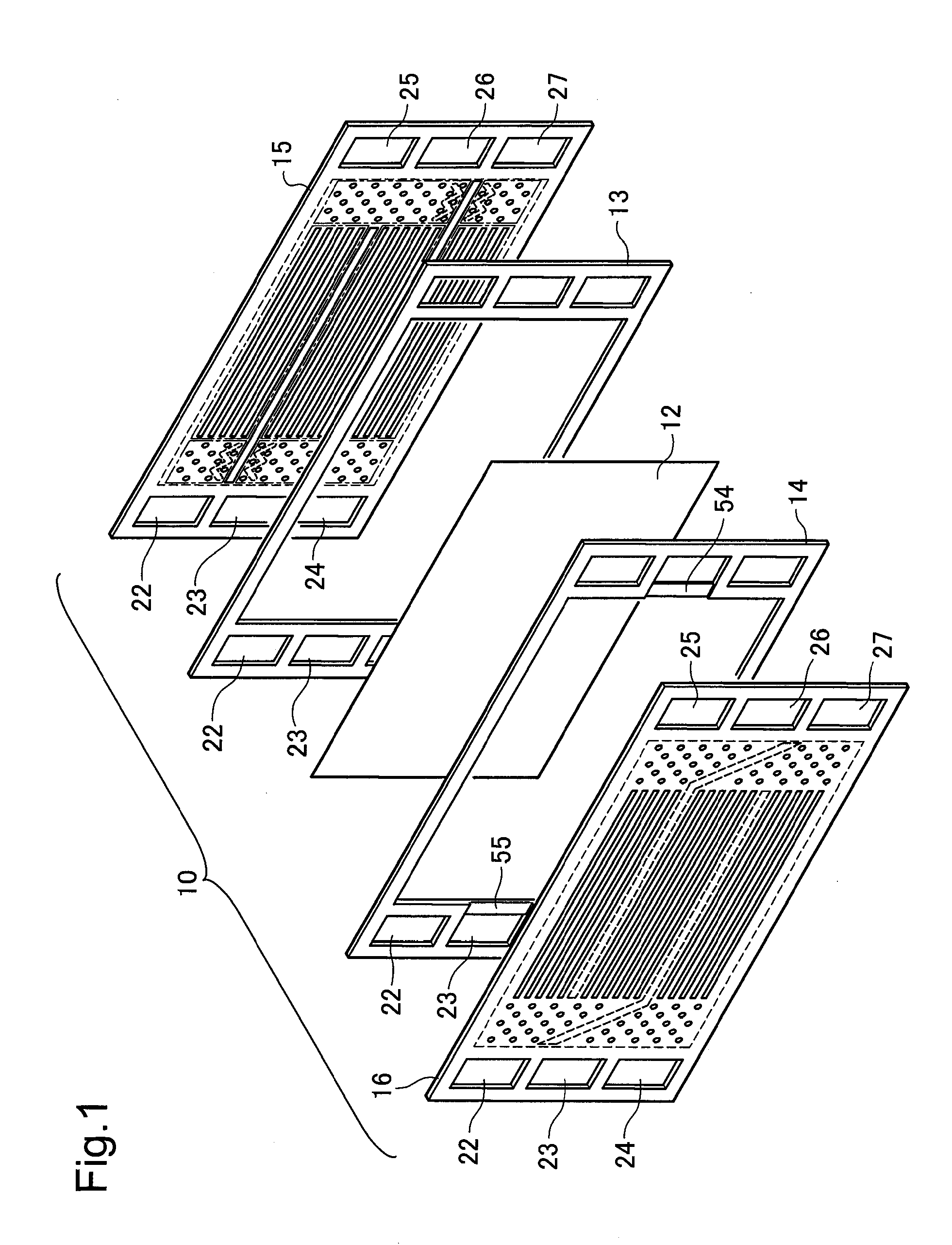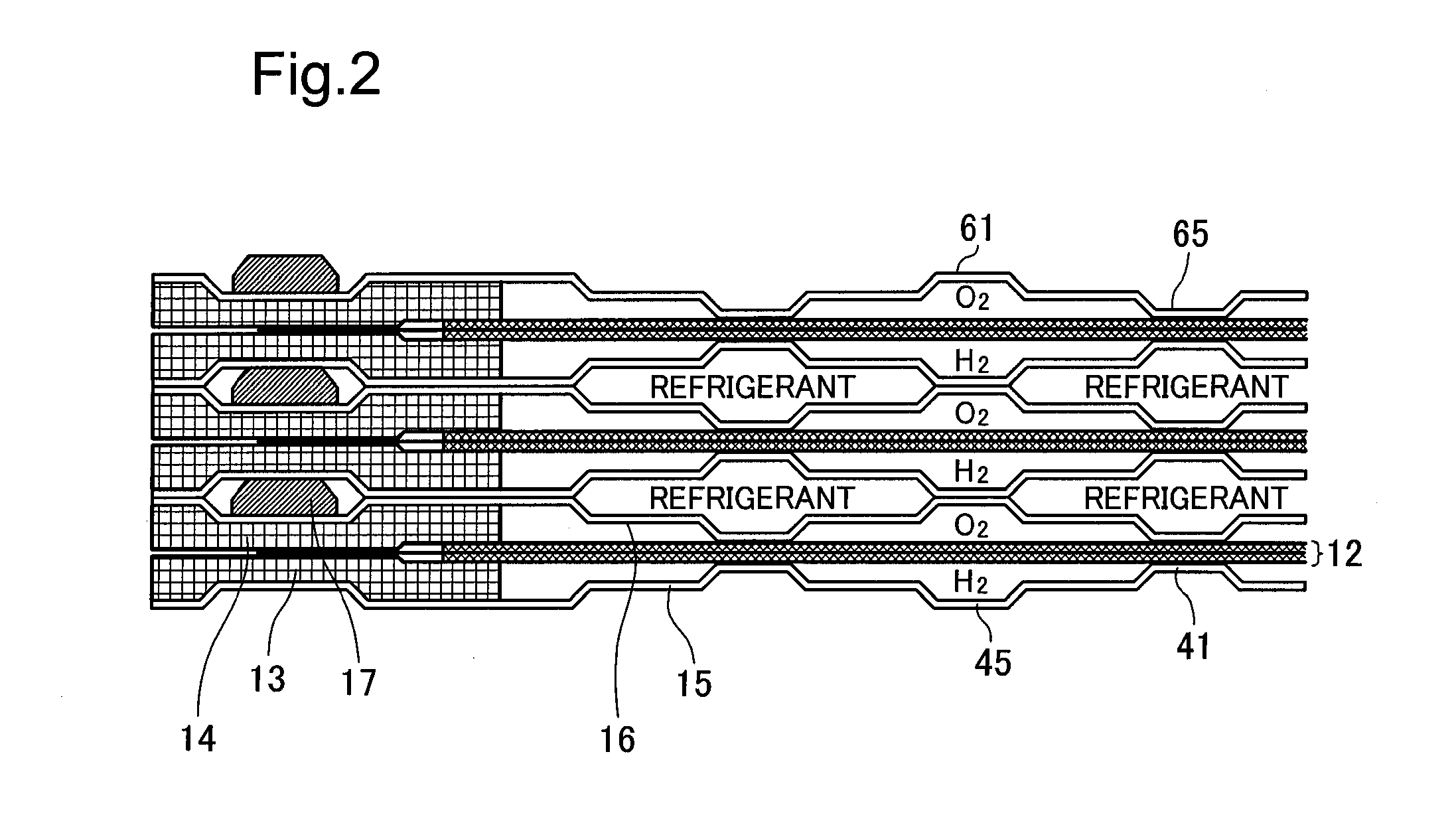Separator for fuel cell and fuel cell
a technology of separator and fuel cell, which is applied in the direction of fuel cells, fuel cell details, electrical apparatus, etc., can solve problems such as restricting potential, and achieve the effects of increasing the contact resistance of the gas separator, preventing deformation of the separator, and strengthening the rigidity of the separator
- Summary
- Abstract
- Description
- Claims
- Application Information
AI Technical Summary
Benefits of technology
Problems solved by technology
Method used
Image
Examples
second embodiment
B. Second Embodiment
[0066]In the structure of the first embodiment, the reinforcing elements 47 are formed as the salients protruded on the refrigerant flow path side. Reinforcing elements may alternatively be formed as salients protruded on the gas flow path side. This modified structure is described below as a second embodiment. A fuel cell of the second embodiment has the same structure as that of the fuel cell of the first embodiment, except that the reparatory 15 is replaced with a separator 115. The like components of the second embodiment to those of the first embodiment are expressed by the like numerals and are not specifically explained here.
[0067]FIG. 9 is plan views showing the structure of the separator 115 included in the fuel cell of the second embodiment. FIG. 9(A) shows a gas flow path side, and FIG. 9(B) shows a refrigerant flow path side. The separator 115 has the same structure as that of the separator 15, except that the reinforcing elements 47 are replaced by r...
modified example 1
C1. Modified Example 1
[0070]In the first and the second embodiments, the reinforcing elements 47 and 147 are formed as the zigzag-shaped linear convexes with bends. This shape is, however, neither restrictive nor essential. Each of the reinforcing elements may be formed as a straight linear convex with no bends according to the arrangement of the projections 42 and 46 provided in the inflow outflow areas 33 and in the connection areas 34. One exemplary structure of such modification is shown as a first modified example in FIG. 10. The like components of the first modified example to those of the first embodiment are expressed by the like numerals and are not specifically explained here. FIG. 10 is an enlarged plan view showing a partial area of the refrigerant flow path side of the separator corresponding to the location in the vicinity of the parting linear convex 40. In the first modified example shown in FIG. 10, each of straight linear reinforcing elements 247 is formed by conne...
modified example 2
C2. Modified Example 2
[0071]In the first and the second embodiments, a single reinforcing element is formed on each side of and along each of the parting linear convexes 40 by connecting the positions where the projections 46 are expected to be formed according to the regularity of the intervals of the projections 46. In one modification, multiple convexes may be formed by discretely connecting certain positions where the projections 46 are expected to be formed and may constitute as a whole a reinforcing element arranged along each of the parting linear convexes 40. One exemplary structure of such modification is shown as a second modified example in FIG. 11. The like components of the second modified example to those of the first embodiment are expressed by the like numerals and are not specifically explained here. Like the illustration of FIG. 10, FIG. 11 is an enlarged plan view showing a partial area of the refrigerant flow path side of the separator corresponding to the locati...
PUM
 Login to View More
Login to View More Abstract
Description
Claims
Application Information
 Login to View More
Login to View More - R&D
- Intellectual Property
- Life Sciences
- Materials
- Tech Scout
- Unparalleled Data Quality
- Higher Quality Content
- 60% Fewer Hallucinations
Browse by: Latest US Patents, China's latest patents, Technical Efficacy Thesaurus, Application Domain, Technology Topic, Popular Technical Reports.
© 2025 PatSnap. All rights reserved.Legal|Privacy policy|Modern Slavery Act Transparency Statement|Sitemap|About US| Contact US: help@patsnap.com



